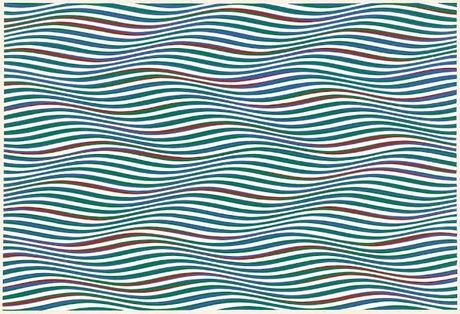However, one of the most interesting and striking paintings I have ever seen was the Mona Lisa by Leonardo da Vinci in the Louvre in Paris. The painting is smaller than you would imagine and is protected by bullet proof glass case due to it being vandalised several times since 1956. The room where the Mona Lisa is located was packed with tourists from all over the world filming the painting on their smartphones. Multiple languages were spoken as people pushed and shoved for the best photo opportunity.The Mona Lisa has “presence” and no matter where you are in the room her eyes seem to follow you. She is always looking at you, mockingly perhaps, she seems to know something the viewer does not. One of the reasons for this is that da Vinci is believed to have created the painting using the golden ratio especially in the face of Mona Lisa.
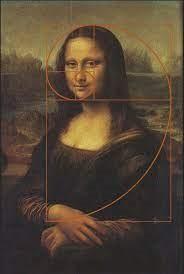
Mona Lisa by Leonardo da Vinci, 1503
The golden ratio, also known as the divine proportion, is a special number (approximately 1.168) that appears in art, geometry and architecture. In essence, this a method of dividing a rectangle into a series of squares. The golden ratio allows artists, architects and mathematicians to work out geometry, spaces, shapes, proportion, perspective and distances on canvas as can be seen in the golden ratio grid below.
The Golden Ratio Grid by Dianne Mise, 2023
The golden ratio has a history that stretches all the way back to India in 2nd or 3rd century BC in the works of the Indian mathematician Acharya Pingala. From here the golden ratio formula traveled by way of the Ancient Egyptians, Ancient Greeks such as Plato and Euclid as well as the Arabs and eventually into Europe through Fibonacci and his book Liber Abaci in 1202.According to Gary Meisner in the magazine Golden Number (2015), the golden ratio was highlighted in a book on mathematical proportions, perspective and architecture called Divina Proportione written by Luca Pacioli in 1498 and published in 1509.
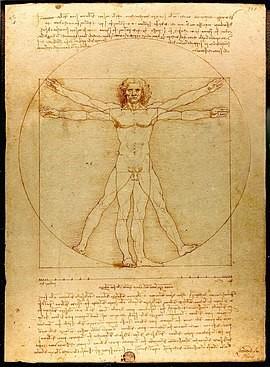
Vitruvian Man by Leonardo da Vinci, 1490
Leonardo da Vinci provided the illustrations in the book including the Vitruvian Man which appears to have created using the golden ratio. The book became a best seller if manuscripts could be classed as best sellers. And in one of da Vinci’s most famous paintings The Last Supper, key aspects of the room, tables and ornaments utilised the golden ratio to provide perspective, balance and harmony.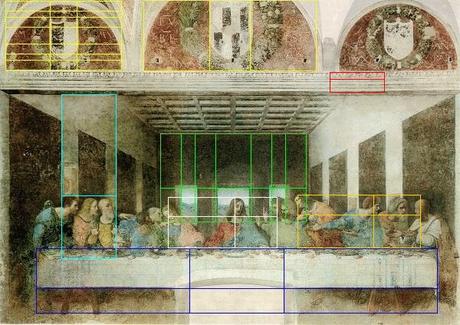
The Last Supper by Leonardo da Vinci, 1495-1498
Michelangelo used the golden ratio in his painting The Creation of Adam on the ceiling of the Sistine Chapel. The finger of God touches the finger of Adam at the precise point of the width and height of the boxes that contain them both. This brings a form of symmetry to paintings and provides perspective for both the painter, when working, and the viewer.According to Mario Livio in The Golden Ratio: the story of Phi, 2002, Salvador Dali used the golden ratio in two ways in his 1955 painting The Sacrament of the Last Supper. The proportions in this painting are related to the golden ratio and a huge dodecahedron is incorporated as well. A dodecahedron is a twelve faced solid in which each side is a pentagon and whose measurements are a function of the golden ratio. Plato believed the Dodecahedron was the shape which God used to decorate the constellations on the whole heaven. The Sacrament of the Last Supper is now in the National Gallery of Art in Washington D.C. and is the gallery’s most popular work.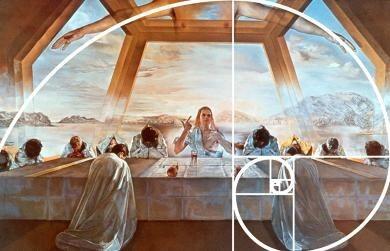
The Sacrament of the Last Supper by Salvador Dali, 1955
However, the golden ratio is not the only guarantee that a painting or artwork will become popular, iconic or a national or international favorite. Could Tracey Emin’s Unmade Bed be classed as a favourite artwork or Damien Hirst’s Calf in Formaldehyde be similarly regarded? Bridget Riley’s mind-bending artworks are amazing and immensely popular but are they favorite artworks?Red, Green and Blue Twisted Curves by Bridget Riley, 1979
The same can be said for Japanese artist Yayoi Kusama whose paintings feature the polka dot as she views the polka dot as symbolic of the form and energy of the sun and the moon which represents calm. Kusama is reputed to be the world’s top selling female artist and the world’s most successful living artist and the humble polka dot has been transformed into some of the world’s most iconic paintings.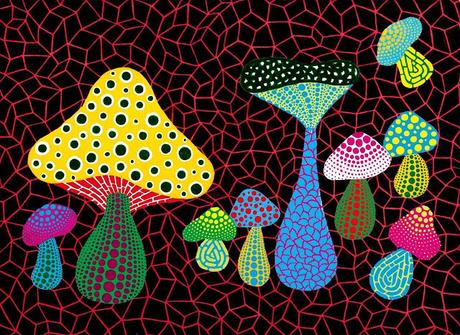
Mushrooms by Yayoi Kusama, 2005
In future will Artificial Intelligence (AI) create material that commands the title of a favorite artwork? There seems to be a demand for digital artworks such as those created by the digital artist Mike Winkelmann, aka Beeple.According to Artsey magazine on the 21st March 2021 Christies in New York sold the collage Everydays: The First 5000 Days (2021) by Mike Winkelmann/Beeple for $69.3 million dollars, making Beeple’s work the third most expensive for a living artist at the time. The collage is a record of 5000 original digital artworks that were uploaded each day for 5000 days by Beeple.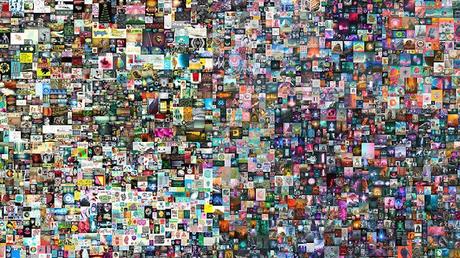
Everydays: The First 5000 Days by Beeple, 2021
Rather than receive a painting the winning bidder received a non-fungible token (NFT) which is a unique digital identifier using blockchain technology to certify and verify ownership of this digital artwork. An NFT is a type of crypto currency similar to Bitcoin and other digital currencies.Digital art can be displayed by projecting the art from large screen videos to digitally generated sculptures and as such these artworks are portrayed differently to actual physical paintings. Given the growing number of people who use AI technology to create and display their creations, what could be considered a favorite painting or artwork may well change dramatically in the future as Beeple and his success suggest. However, digital artwork is not a physical reality in the way a painting is and this lack of physicality may prevent digital art from becoming truly mainstream.The interesting thing about the artists Emin, Hirst, Riley, Kusama and Beeple is that none of them have used the golden ratio and their art works are very different. Additionally, all these artists are phenomenally successful in output and financial terms. Therefore, this begs the question if good artwork does not need the golden ratio for success how is a favorite painting identified?Perhaps we should refer to the Scottish philosopher David Hume who said in 1757 in Of the Standard of Taste and Other Essays that “Beauty is no quality in things themselves: It exists merely in the mind which contemplates them; and each mind perceives a different beauty.” In other words, beauty is in the eye of the beholder and a favorite painting or artwork must also be in the eye of the beholder. Therefore, the perception of a favorite painting or artwork is not objective but subjective and maybe that’s the way it should be.A Favourite Painting
You’ll know it when you see it,
You’ll stand there and maybe not
Believe it; You may be transported
Back to another place, another era;
Maybe the South of France where
The weather, the women, the wine
Led you a merry dance; or a
Walk with a Monarch of the
Glen or a mountain track so
High that it almost touches the sky;
Perhaps you will just remain still,
Marvel at the inspiration
That could fire such imagination; Or
Sit and smile, taking a while to absorb
The finely textured, structured scene
That can revive a long-forgotten dream, or
A moment lost in time or a landscape sublime;
But whatever it is, wherever you are
You’ll know it when you see it.
Dermot Moroney 2023 Email ThisBlogThis!Share to TwitterShare to Facebook
